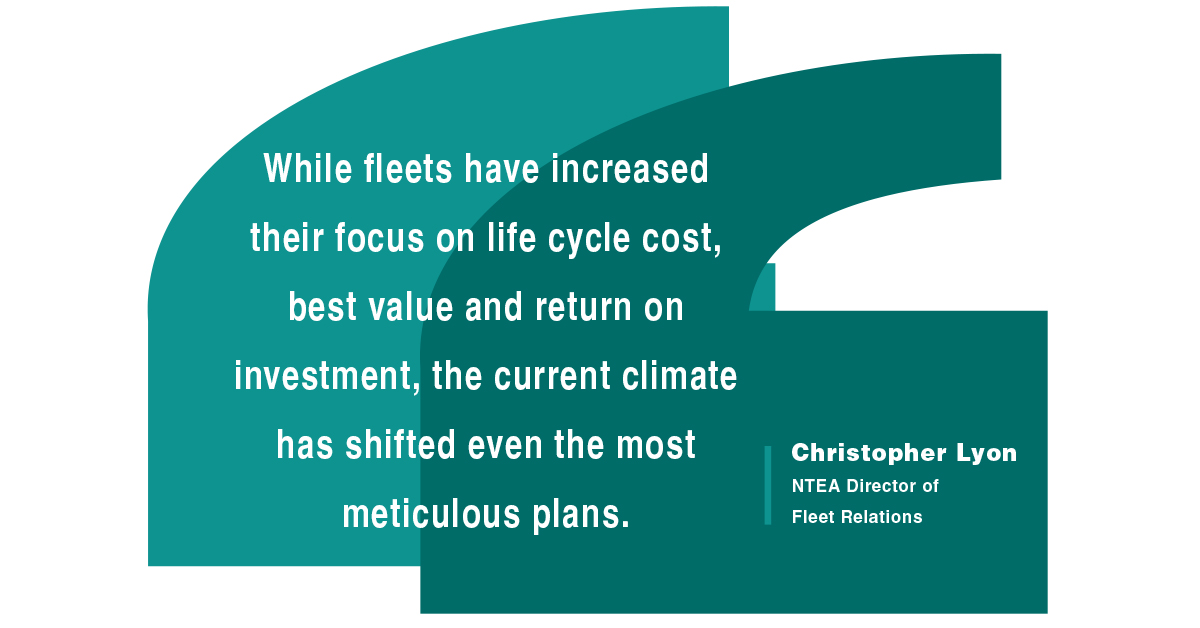Christopher Lyon
NTEA Director of Fleet Relations
chris@ntea.com
This article was published in the December 2021 edition of NTEA News.
By now, most sales teams have experienced supply chain disruptions — chip shortages,
allocation issues, short ordering windows and extended delivery times. While some relief may be on the horizon next year, this has been a far-reaching challenge for the industry, with cost and availability — key factors in buying decisions — no longer as controllable.
Your customers may recall more favorable conditions with overall cost of existing equipment (including maintenance and operating expenses), promised delivery times, projected life cycle cost of equipment being acquired, and after-sale support and service.
As a chassis or equipment supplier, a current challenge is identifying important customer issues that are within your control. Remember, no two customers are alike or have the same evaluation methodology when choosing suppliers. This means it’s important to understand their unique needs and become an influencer.

Be a customer resource
While fleets have increased their focus on life cycle cost, best value and return on investment, the current climate has shifted even the most meticulous plans. This is where suppliers can leverage their value as industry experts and resources for customers.
For example, look at the larger picture and help customers with their replacement forecasts and product availability expectations. By now, fleet operators and stakeholders are seeing the crunch on their end and planning for extended vehicle and equipment life. While not ideal or a sustainable long-term plan, it’s the short-term reality.
Answer the hard questions
There’s no doubt some of the most challenging questions being asked are: How many can I have and when can I have them? Normally, there’s been a clearer picture and more control for suppliers and upfitters. With vehicles that are most likely manufactured in multiple stages, communication is now even more critical. Your customers may be deferring or planning expensive maintenance on an asset that historically is already past the planned life cycle.
The expression “underpromise and overdeliver” is a reminder it’s important to understand fleet customers and communicate with all stakeholders. This includes the entire manufacturing segment. Fleets are making hard financial decisions on equipment based on realistic delivery timelines. Knowing current constraints, they’re making the best choices based on information currently available. Be realistic and honest with your customers, but understand it’s more important than ever to be as accurate as possible on availability, timeliness and final delivery.
Find more fleet articles and tools at ntea.com/fleetresources.